Gretna and Gretna Green, Scotland by Motorhome
After our overnight stay in Carlisle, a 15 minute drive to Grenta had me sat in the passenger seat, armed with my camera. I was ready to take a photo of the ‘Welcome to Scotland’ sign, only to see it up ahead in the distance as we peeled off the motorway! Yes, Gretna is so close to the border, you come off the motorway in England. Luckily, they put a sign on the road into the town, so I knew we’d crossed the border.
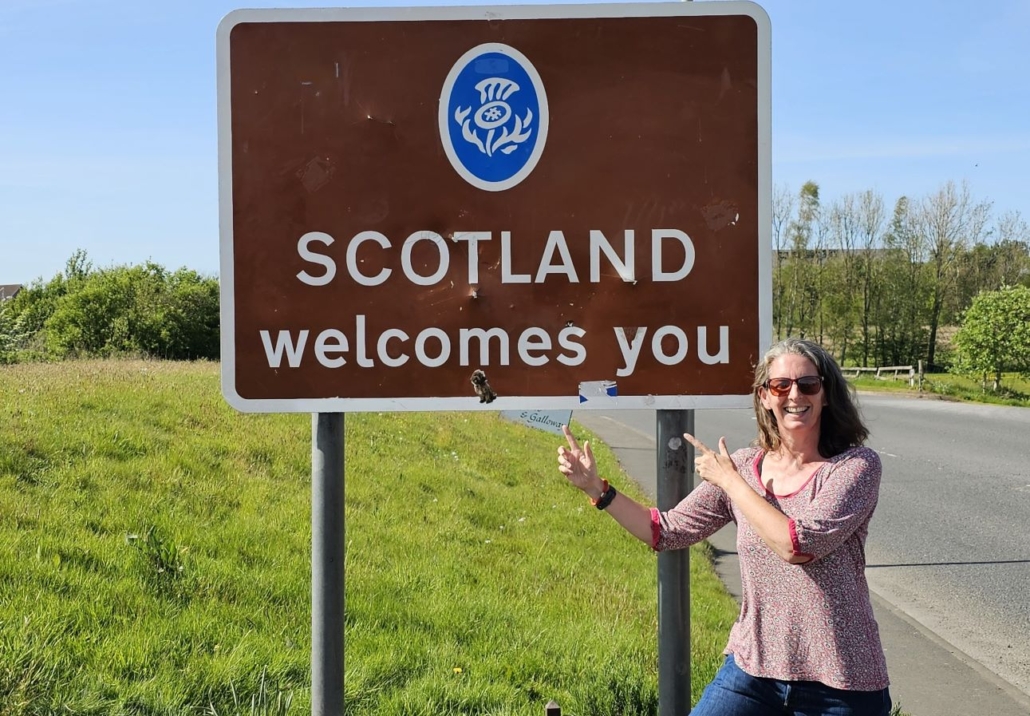
My Dad is a proud Scot, although he’s lived in England for over 50 years. I was born south of the border (they moved to England a month before I was born) so I still get that new country excitement when I cross over into Scotland – to me it’s all still a bit foreign.
We pulled into our pre-booked overnight stop in Gretna and were greeted by Colin the owner came. Once we’d parked up on pitch one in his front garden we chatted about how he and his wife used to own a campsite in France. They bought a B&B in Gretna but when COVID hit they decided to close and set up the motorhome aire instead. They have pitches dotted around the garden for the house, in which he and four generations of his family live.
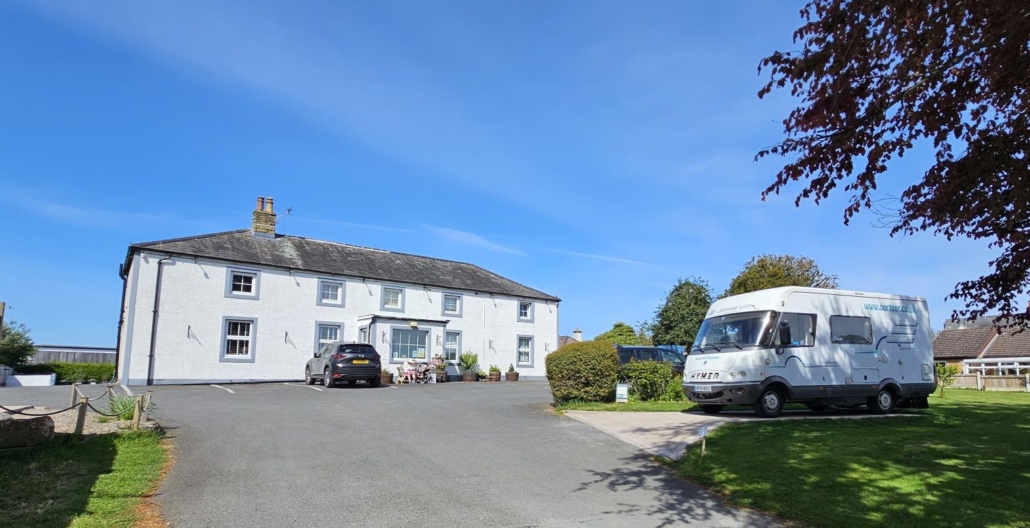
Colin asked if we were here to visit the outlet village, as it had been packed the day before on the bank holiday. We didn’t realise it was there, although we’d just driven past it. It’s not really mine or Jay’s thing, so I guess it just didn’t register. We did go for a look around – mainly in the Cadbury and Lindt chocolate shops – but as we’re fairly canny shoppers anyway, nothing seemed that much of a bargain to us. I much prefer finding a designer item in our local charity shop – for a lot less money (maybe there is a tad more Scottish in me than I realised?).
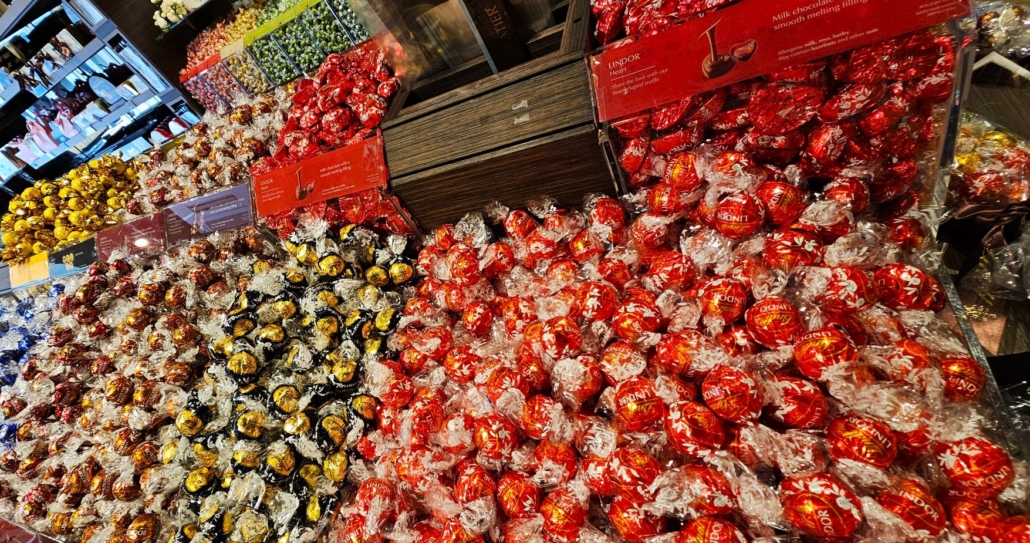
After the shops, we walked about a mile up the road to Gretna Green. Friends of ours got married here, and we joked about eloping there after we’d got engaged, so we thought we’d see why it’s the marriage capital of the UK. We’d been told by our host what a thriving business it is – with around 5000 weddings across the various venues last year. I’m not sure what we expected, but it was certainly an interesting place to look around.
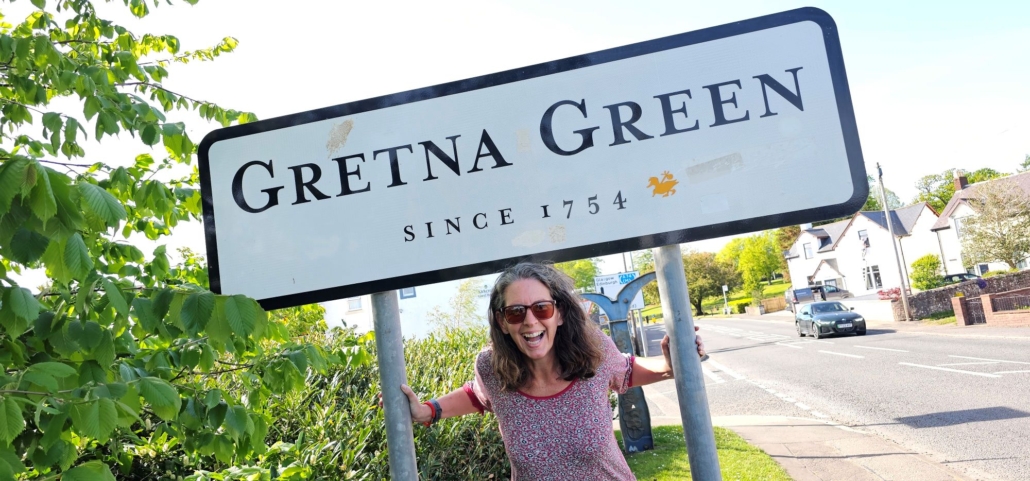
After passing an old Toll House, Grenta Green Hall and another venue all of which also do weddings, we arrived at ‘The Gretna Green Famous Blacksmith Shop’. All the signs said ‘shop’ on the end, and it looks like that’s pretty much what it has become – a large commercial enterprise built around weddings. I’m not complaining, it’s still probably loads cheaper than any other wedding venue due to volume, but I was taken aback by just how commercial it was.
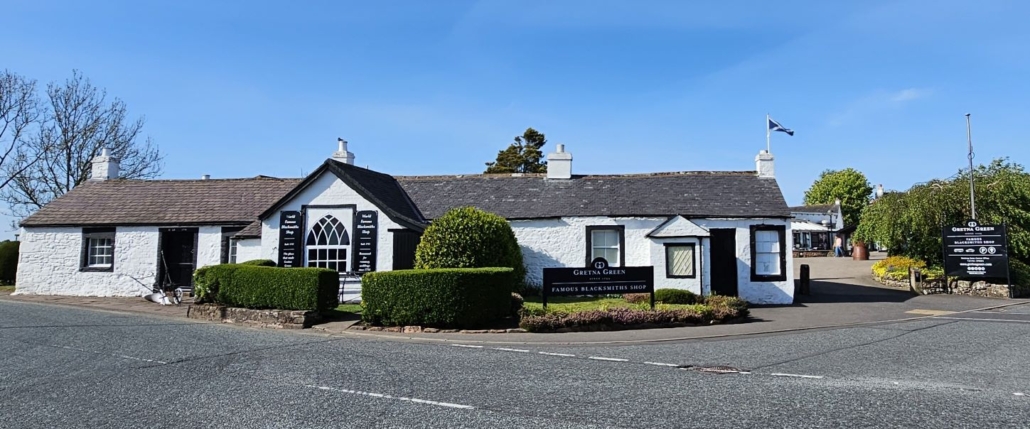
The complex of buildings at the blacksmiths included a food court, a gift shop, a second gift shop of all things Scottish, three wedding rooms each with their own anvil, a hotel, a maze and a big ‘Love’ sign covered in love locks. There was also the Gretna Green Experience, a museum telling the history of the place. According to the website it should have been £6.95 each to go in, but for some reason it was free when we visited.
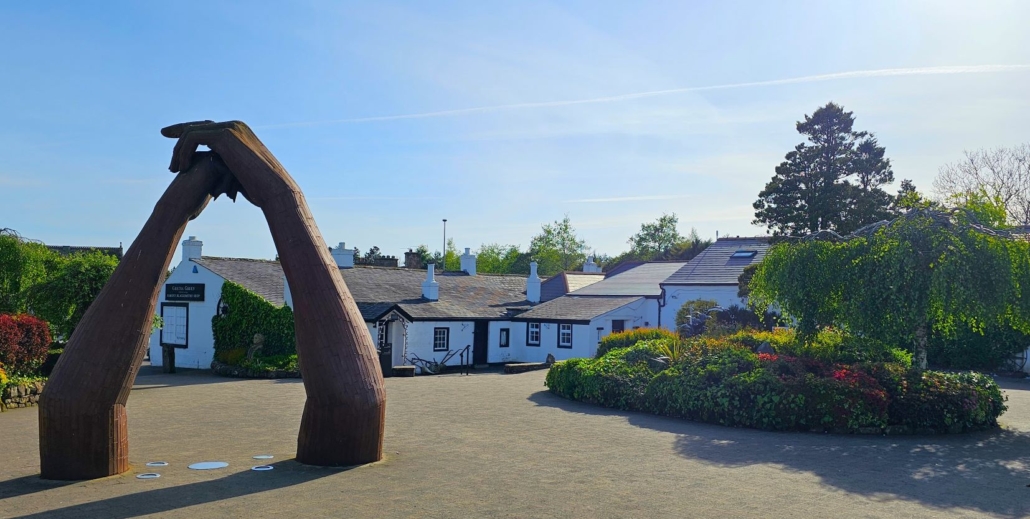
We wandered around the information boards, peeked into each of the wedding rooms and touched the original anvil – for good luck in love. The history of the place is fascinating and dates back to 1754 when the British Government brought in a law to address the growing problem of irregular marriages, especially those involving clandestine ceremonies and potential bigamy or fraud. The Marriage Act mandated that all marriages take place in a church by an Anglican minister, with announcements made through banns or a license and parental consent required for those under 21.
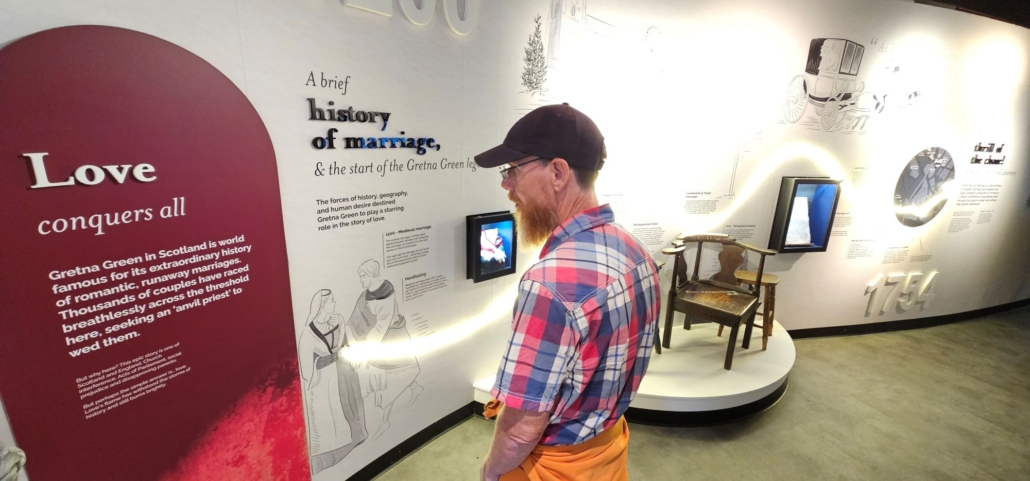
The law came into force in England on March 25, 1754, but in Scotland people were still free to marry from the age of 16 as long as they had two witnesses. From the day the act came in, young couples who wanted to marry without their parents’ permission started to make their way to Scotland. The first place many of them reached was Gretna Green as it’s only a mile from the border. The blacksmiths was usually open late, with a warm fire burning all the time, making it a perfect place to stop.
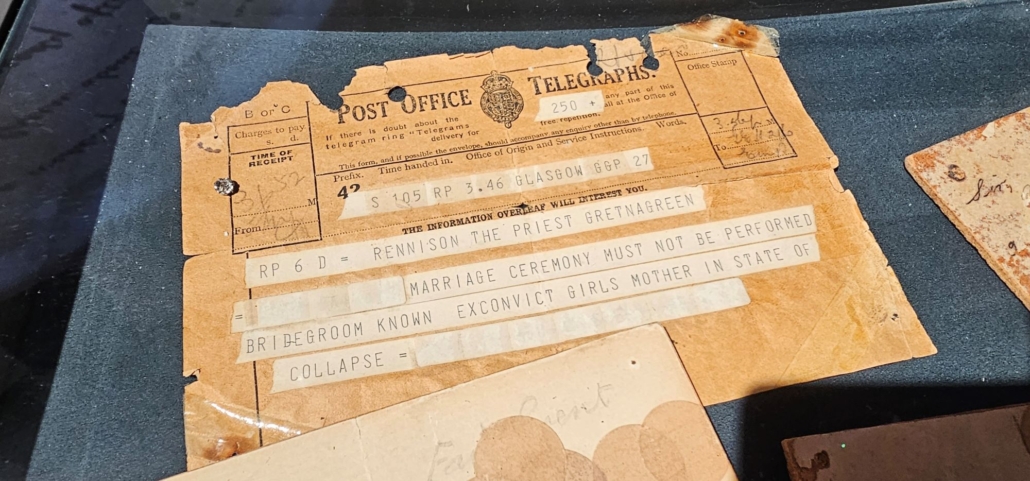
Over the following years a wedding industry sprung up catering for all the couples eloping to the village. Even when in 1856 Scottish laws changed meaning that one party must have lived in Scotland for at least 21 days before the wedding, business carried on – with locals and nearby barns being used to house the temporary ‘residents’.
It wasn’t until 186 years later in 1940 that the law in Scotland changed again to outlaw ‘Anvil’ weddings. Now only a local registrar could marry the couple, but couples still came to be married in the registrar office in Gretna, then have a blessing at the blacksmith’s anvil. Laws have changed again now and it’s possible to have a civil or religious wedding at the blacksmiths – which many couples still do.
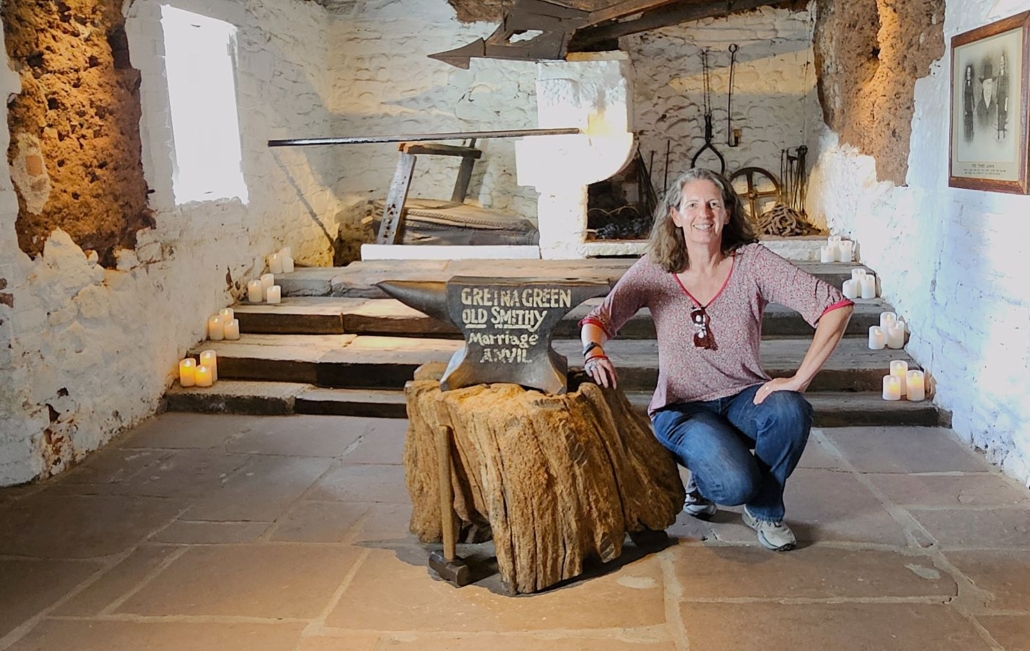
Back in Gretna we wondered why there’s a Gretna and a Gretna Green. A quick internet search revealded that Gretna Green came first and became famous for weddings, while Gretna was purpose-built in the first world war to house a massive munitions factory and its workers. Walking around Gretna I spotted a statue which I thought was to cheese making (I hadn’t done the internet search at this point!), but the young girl in the frilly hat wasn’t filling a milk churn, she was putting cordite into a munitions shell.
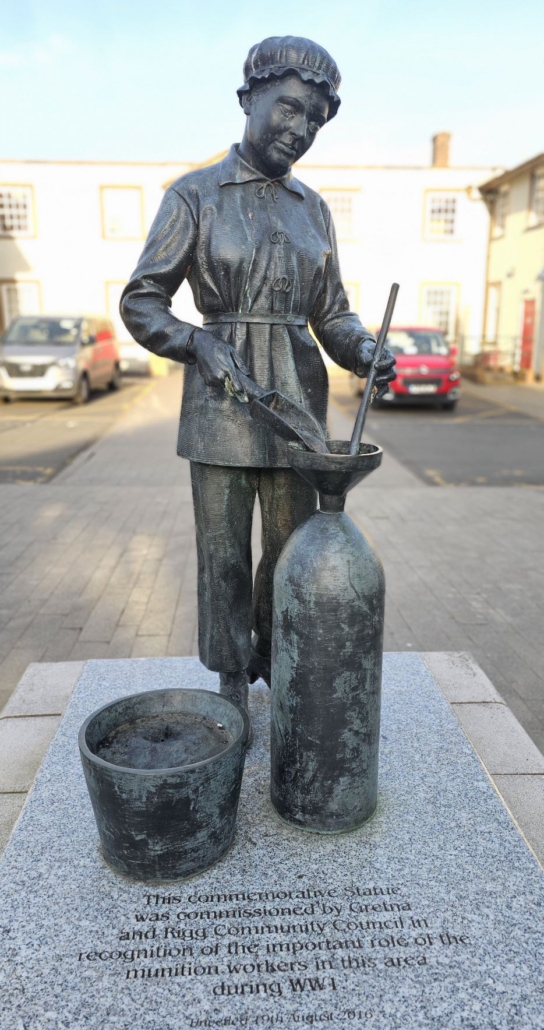
HM Factory Gretna produced over 1,400 tonnes of Cordite per week, more than all the other munitions plants in Britian combined, and in 1917 the largest proportion of the workforce were women, who were know as The Gretna Girls.
Cordite was also known as the “Devil’s Porridge”; after Sir Arthur Conan Doyle (he of Sherlock Holmes fame) visited the factory in 1916 as a war correspondent. He later wrote “The nitroglycerin on the one side and the gun-cotton on the other are kneaded into a sort of a devil’s porridge; which is the next stage of manufacture…those smiling khaki-clad girls who are swirling the stuff round in their hands would be blown to atoms in an instant if certain small changes occurred”.
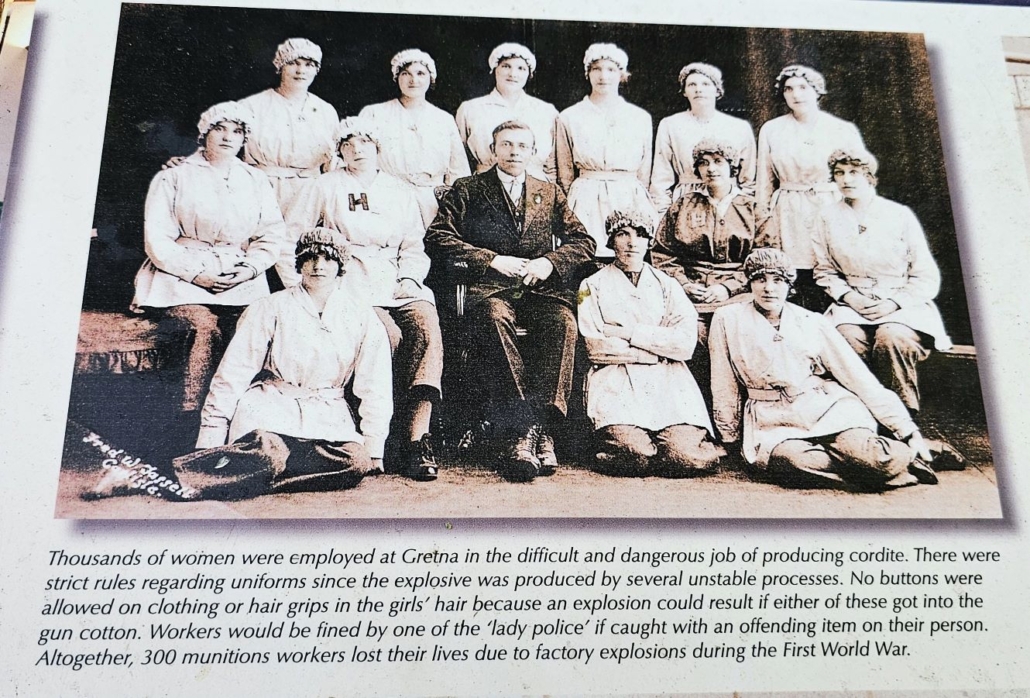
After a very peaceful night’s sleep in Colin’s garden, we headed over to the town of Langholm where my Dad grew up. My Auntie Grace still lives there, so we popped by to say hello and to take a few photos of the town for my Dad. It was lovely to see Grace again and have a catch up with her. Unfortunately my Dad isn’t able to write to her anymore and he struggles using the phone, so it was good to have a very long overdue catch up.
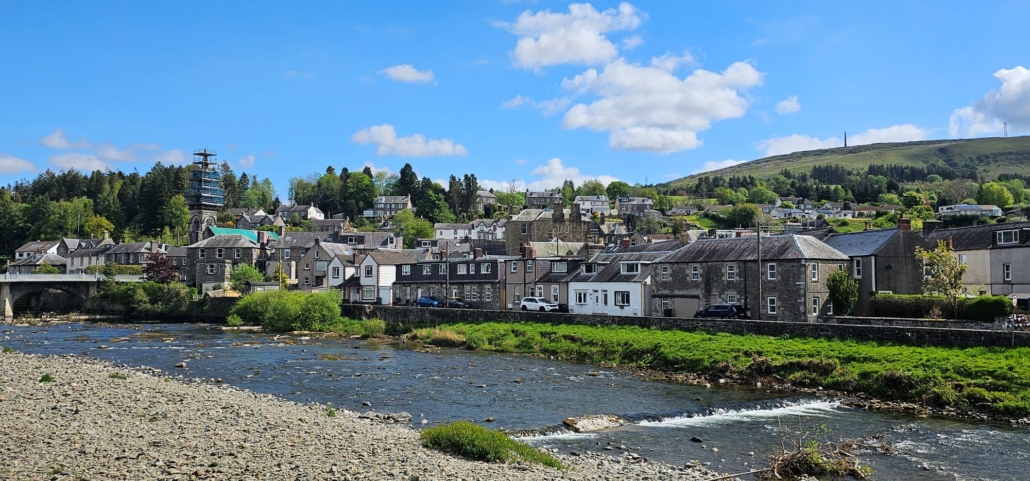
Grace asked us where we were heading to next, to which we replied Kirkcudbright. She kindly corrected us to how it should be pronounced (Ker-coo-bree) and we’ve agreed to call her for translation duties while we’re north of the border. She’s also going to Kirkcudbright next Tuesday to visit an art gallery hosting an exhibition of one of her favourite artists. She really is an inspiration, and I seriously hopw that when I reach 92 (93 next month), I’ll still be getting out and about taking part in things I enjoy.
Ju x

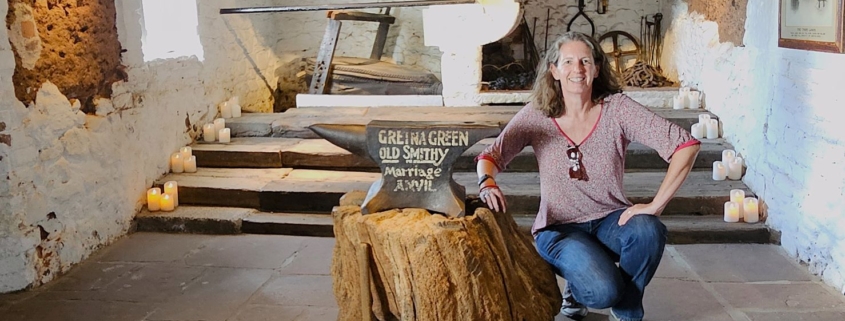

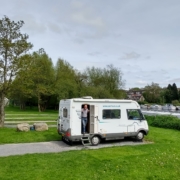
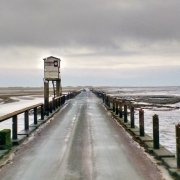

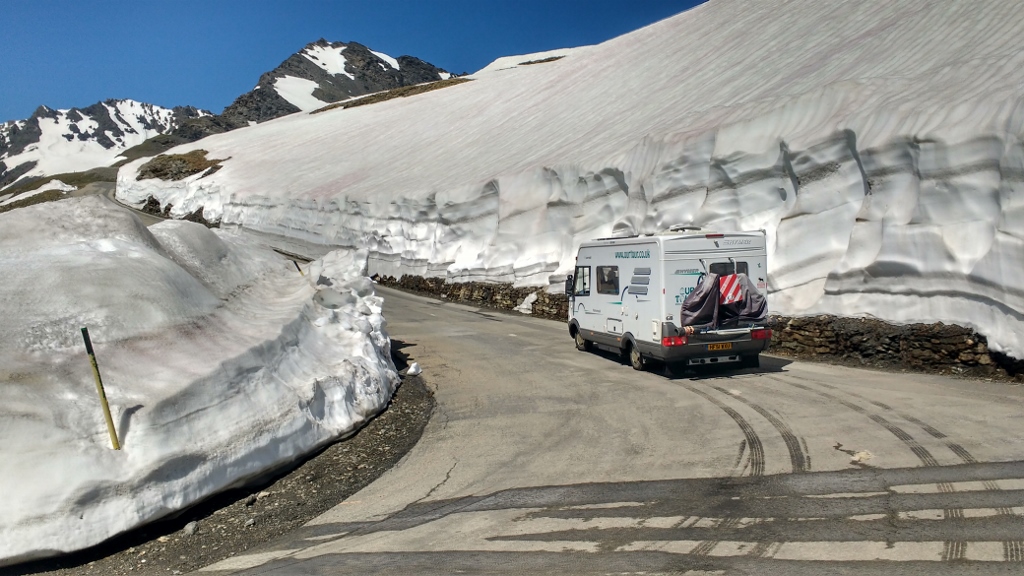




We’re going to be in Scotland next month. Arrive Edinburgh June 5th, and doing a couple of house and dog sits throughout the month with a rental car. No motorhome this time around!
Sounds good guys, happy travels! Cheers, Jay
Lovely piece guys!
We got married in Gretna in 2019 at the Old Tollbooth.
We drove all the way from Suffolk, spent a couple of nights at Dent in Cumbria, then made our way over the border for the big day.
None of our family knew about it!
Your post brought back many happy memories of the day itself and the subsequent honeymoon spent road-tripping around the Highlands. Magical.